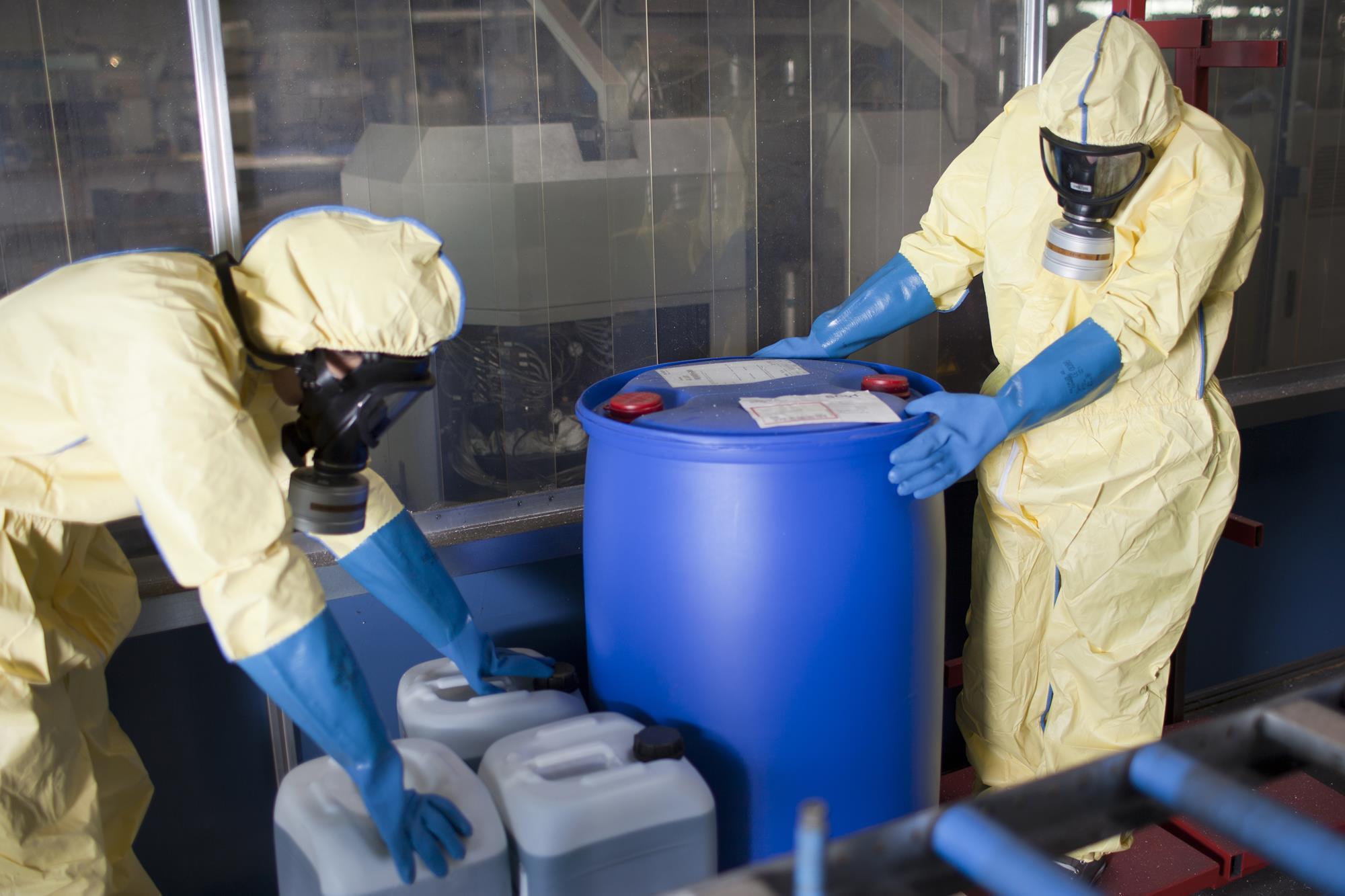
Chloropicrin, also known as PS, is a highly potent chemical compound that has been used extensively in the field of weapons and warfare. With its distinctive yellowish color and pungent odor, chloropicrin has the ability to cause a variety of harmful effects on the human body. In this article, we will explore 15 fascinating facts about chloropicrin, shedding light on its history, uses, and impact on the environment. From its role as a chemical weapon in World War I to its modern-day applications in the agricultural industry, chloropicrin has a long and complex story. So, fasten your seatbelt and get ready to dive into the intriguing world of chloropicrin.
Key Takeaways:
- Chloropicrin is a powerful agricultural fumigant with a fascinating history, but its use requires caution due to its irritant and corrosive properties. Proper handling and responsible usage are crucial for its safe and effective application.
- From its role in World War I to its FDA-approved use in the food industry, chloropicrin has diverse applications. However, its high volatility and potential hazards necessitate strict safety measures and responsible usage to prevent environmental contamination and harm.
What is Chloropicrin?
Chloropicrin is a chemical compound with the formula CCl3NOIt is commonly used as a powerful agricultural fumigant, especially in the treatment of soil and stored grain pests.
History of Chloropicrin
Chloropicrin was first synthesized in 1848 by the British chemist John Thomas Way. However, its use as a pesticide and fumigant gained prominence in the early 20th century.
Powerful Irritant
Chloropicrin is known for its highly irritant properties. Exposure to this compound can cause severe irritation to the eyes, skin, and respiratory system. Protective measures should be taken when handling it.
Role in World War I
During World War I, chloropicrin was used as a chemical weapon. It was released in the trenches to incapacitate soldiers by causing severe respiratory distress.
Soil Sterilization
Chloropicrin is widely used to sterilize soil before planting crops. It helps eliminate weed seeds, nematodes, bacteria, fungi, and other soil-borne pests, ensuring better crop yields.
High Volatility
Chloropicrin has a low boiling point, which makes it highly volatile. This property allows it to rapidly dissipate after application, minimizing any residual effects on the environment.
Environmental Concerns
While chloropicrin is an effective pesticide, it is important to use it responsibly. Overuse or incorrect application can lead to environmental contamination and harm non-target organisms.
Corrosive Properties
Chloropicrin is corrosive to metals and materials such as rubber. It can cause damage to equipment and infrastructure if not handled with care.
Warning Agent
Chloropicrin is often used as a warning agent in combination with other pesticides. Its strong odor acts as an early indicator of pesticide presence, providing a safety measure for workers.
Usage in Food Industry
Chloropicrin is FDA-approved for use in the food industry as a fumigant. It helps control pests in food processing facilities and storage areas, ensuring the safety and quality of food products.
Alternative to Methyl Bromide
Due to its ozone-depleting properties, the use of methyl bromide as a fumigant has been restricted. Chloropicrin is considered an alternative to methyl bromide for soil sterilization and pest control.
Colorless Liquid
Pure chloropicrin is a colorless liquid with a pungent, tear-inducing odor. Its distinctive smell makes it easily detectable even at low concentrations.
Safety Precautions
When working with chloropicrin, it is vital to wear appropriate personal protective equipment (PPE) such as gloves, goggles, and respiratory protection. Adequate ventilation should also be ensured.
Multiple Applications
Aside from agriculture, chloropicrin has various applications, including pest control in stored commodities, termite treatment, and as a precursor in chemical synthesis.
Restricted Use
Due to its potential hazards, the use of chloropicrin is regulated in many countries. It requires proper licensing and adherence to strict safety guidelines to prevent misuse.
Overall, these 15 facts about chloropicrin shed light on its importance in pest control, its historical significance, and its potential risks and applications. Whether it is used in agriculture or industry, proper handling and responsible usage are essential to maximize its benefits while minimizing any adverse effects.
Conclusion
Chloropicrin, also known as PS or nitrochloroform, is a powerful chemical compound used primarily as a fumigant and a chemical warfare agent. This colorless, oily liquid has a pungent odor and is highly toxic. It has played a significant role in various industries, including agriculture and military applications. Its lethal properties and versatility make it a subject of great interest and concern for researchers, as they explore both its benefits and potential hazards.
FAQs
Q: What is chloropicrin?
A: Chloropicrin, also known as PS or nitrochloroform, is a highly toxic chemical compound used as a fumigant and a chemical warfare agent. It is commonly used in agriculture to control pests and diseases in soil, as well as in military operations.
Q: How is chloropicrin used?
A: Chloropicrin is primarily used as a fumigant to sterilize soil, killing pests, weed seeds, and pathogens. It is also used as a chemical warfare agent due to its toxic properties and ability to incapacitate or kill individuals exposed to it.
Q: What are the hazards of chloropicrin exposure?
A: Chloropicrin is highly toxic and can cause severe health effects if inhaled, ingested, or comes in contact with the skin or eyes. Symptoms of exposure include respiratory distress, eye and skin irritation, nausea, vomiting, and in severe cases, can lead to lung damage and even death.
Q: Is chloropicrin still used in warfare?
A: While chloropicrin was used as a chemical warfare agent in the past, it is now classified as a Schedule 3 substance under the Chemical Weapons Convention, with limited use. However, it remains a concern due to its potential for illicit production and use by rogue nations or terrorist organizations.
Q: Are there alternative fumigants available?
A: Yes, there are alternative fumigants available that are considered safer and more environmentally friendly than chloropicrin. Some of these alternatives include methyl bromide, phosphine, and sulfuryl fluoride, which have been widely adopted in agricultural practices.
Q: How is chloropicrin regulated?
A: Chloropicrin is regulated by various national and international regulatory agencies due to its toxicity and potential for misuse. It is important to follow strict guidelines and safety measures established by these agencies when handling, storing, or using chloropicrin in any application.
Chloropicrin's history as a chemical warfare agent and soil fumigant is just the beginning. Dive deeper into the world of chemical warfare with our article on Lewisite, another notorious weapon. Explore pesticide effects on the environment through the lens of ecotoxicology. Lastly, discover fascinating facts about agriculture in Alabama, a state known for its diverse agricultural landscape.
Was this page helpful?
Our commitment to delivering trustworthy and engaging content is at the heart of what we do. Each fact on our site is contributed by real users like you, bringing a wealth of diverse insights and information. To ensure the highest standards of accuracy and reliability, our dedicated editors meticulously review each submission. This process guarantees that the facts we share are not only fascinating but also credible. Trust in our commitment to quality and authenticity as you explore and learn with us.


